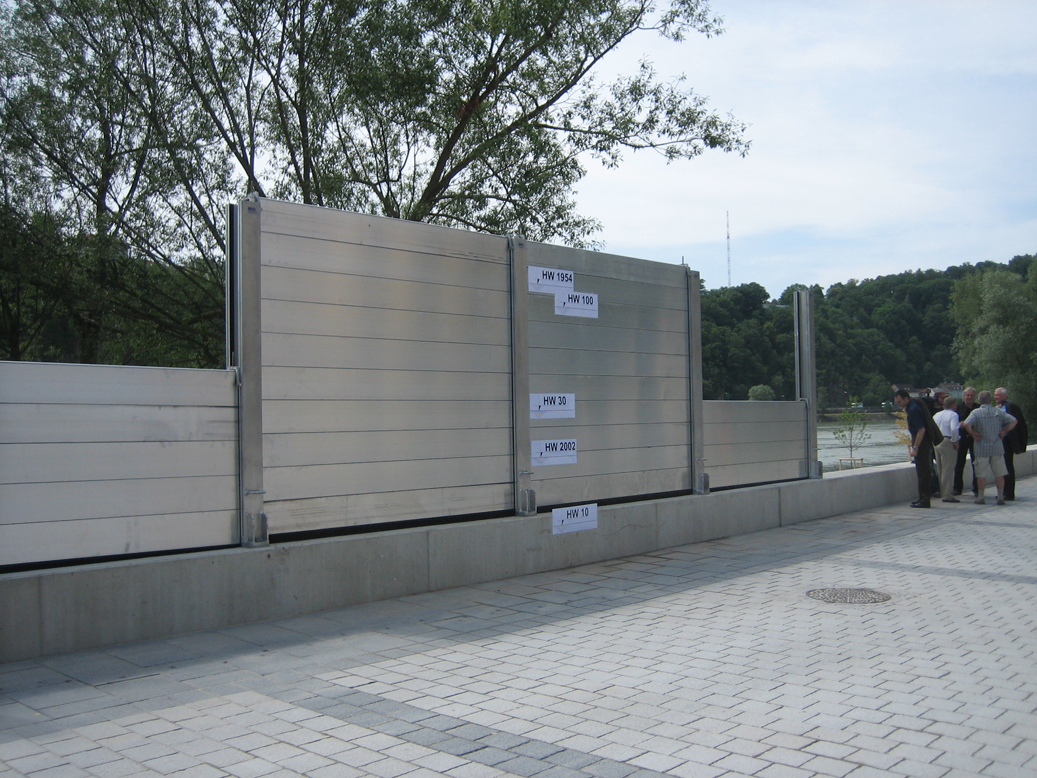Flood protection
In principle, flooding is a completely normal part of natural occurrences, triggered by heavy, prolonged rainfall or melting snow, for example. It becomes problematic when several factors overlap and damage or destroy human life and possessions. Unsuitable management of forested areas and agricultural land, stream and river regulations that accelerate runoff, soil sealing for settlements and transport, and presumably climate change also, however, contribute substantially to an aggravation of the flooding situation in Austria.

After the catastrophic floods on the Danube in 2002 and on the Morava in 2006, a three-pillar model for protection was developed at the federal, state and municipal level. The strategies are based on the principles of sustainability, innovation and socioeconomics. To reduce the risk of flooding in a sustainable manner, several components are combined. Only in this way can the protection of life, health and possessions ultimately work. The combined flood protection in Machland Nord is an example of a particularly important and extensive flagship project.
Hydraulic engineering, federal waterway administration, as well as preventive and protective measures against flooding are all separate areas with special tasks. The Federal Ministry is responsible for hydraulic engineering matters on the Danube, Morava and Thaya. Flood protection on these waters and the responsibilities of waterway infrastructure, water management, ecology and environmental protection are the strategic focus here. The Waterways Act (Wasserstraßengesetz, abbr. WaStG) regulates in detail the tasks of federal waterway administration and of the federal company via donau – Österreichische Wasserstraßen-Gesellschaft, which was established to implement these tasks.
How are flood events evaluated?
Flood events are classified using so-called “annuality”. This term describes the probability of the occurrence of a flood event with the associated discharge. For example, according to statistics, a 100-year Danube flood with an outflow of 11,200 cubic metres per second occurs once in one hundred years, on average.
Ongoing innovation
In flood protection, modern planning methods, mobile flood walls and harbour protection gates are used. In this regard, the townscape character, the recreational function and the landscape are taken into account. Modern planning methods form the basis of all flood protection projects implemented by the states, their construction companies and via donau. Through natural experiments, such as at the test dam Machland Nord, the optimum installation conditions are investigated. This helps to save costs and to protect the environment.
Mobile flood walls, which are only erected in the event of a flood, reduce the interference in the natural environment and settlement area to a minimum and are widely accepted by the population.
Waterways are the most environmentally friendly mode of transport. Harbour protection gates safeguard business locations and competitiveness in this regard. They also contribute to cooperation with the land transport modes of railway and road to a great extent.
It is also important to show consideration for the townscape character, the recreational functions and the landscape, to adapt the architecture and, in this way, to adhere to the requirements of protected areas and cultural heritage.
Sustainability
In modern flood protection, nature conservation and environmental protection are also always considered. Specific EU directives ensure that the principle of sustainability is upheld: from the course of the water bodies to riparian zones, fish ladders as well as wild plants and animals.
Socioeconomics
Flood protection is enshrined in law, which represents a social milestone in the development of protective water management for the population. It enables locations for trade and industry, tourism, the leisure industry and gastronomy to be safeguarded and counteracts migration from rural areas. In the course of the resettlement programmes, the owners can build contemporary, state-of-the-art residential and commercial properties.
Positive cost-benefit analyses confirm the economic efficiency, effectiveness and economy of the flood protection measures taken. After only one to two major flood events, the investments paid off.